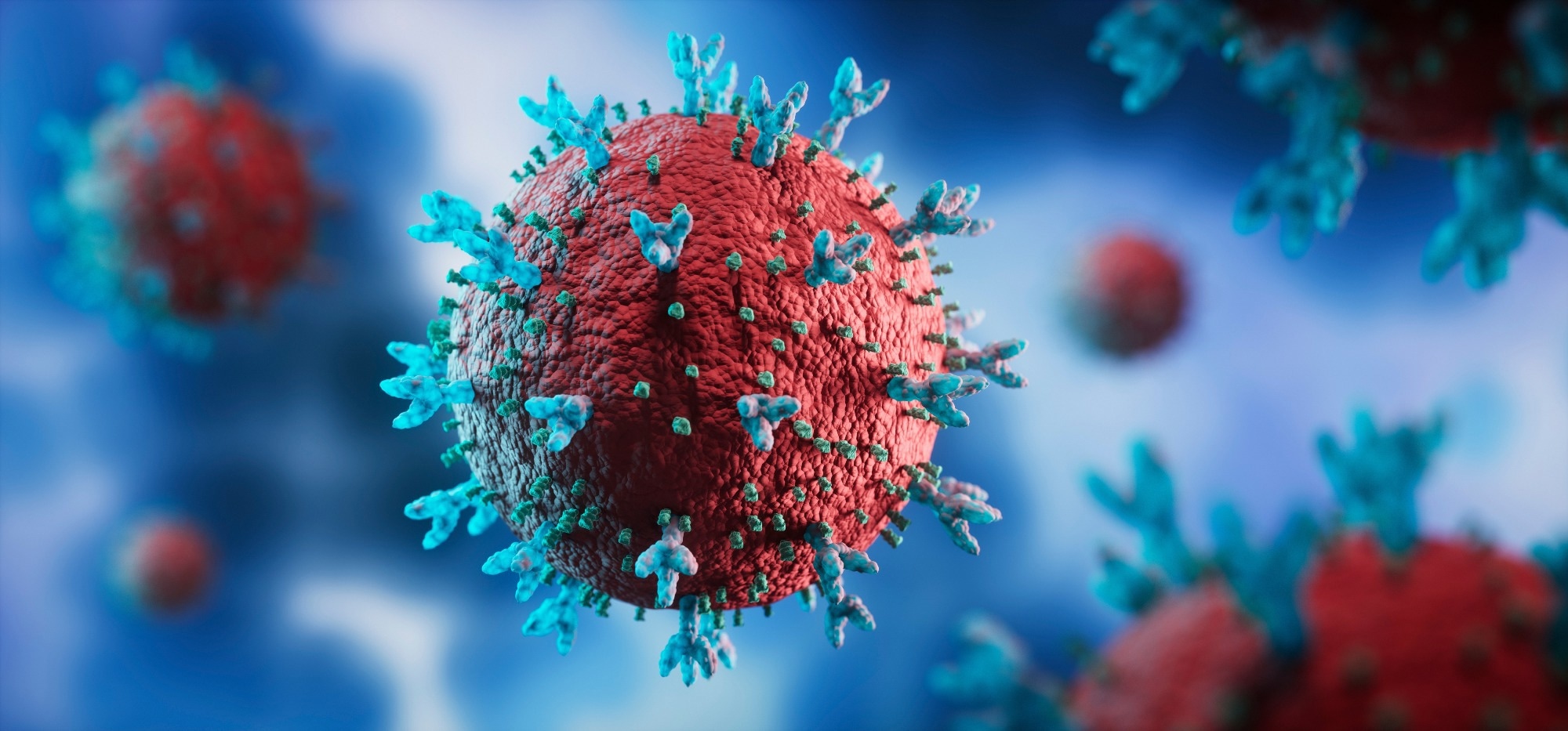
Exploring the dual role of nirmatrelvir and bisphosphonates in COVID-19 treatment and immunity

The unprecedented coronavirus disease 2019 (COVID-19) pandemic facilitated the rapid development and subsequent deployment of several novel and highly effective vaccines. However, the role of antiviral treatments remained pivotal, especially for certain patient populations incapable of mounting an effective vaccine response or those reluctant to be vaccinated.
In a recent review published in the journal Cellular & Molecular Immunology, researchers examine the therapeutic benefits of nirmatrelvir and its possible effects on severe acute respiratory syndrome coronavirus 2 (SARS-CoV-2)-specific adaptive immune responses. Herein, the researchers also discuss the immunomodulatory properties of bisphosphonates, a class of drugs traditionally used to treat bone disorders, and their potential role in mitigating severe SARS-CoV-2 infection.
 Study: The interplay of drug therapeutics and immune responses to SARS-CoV-2. Image Credit: peterschreiber. media / Shutterstock
Study: The interplay of drug therapeutics and immune responses to SARS-CoV-2. Image Credit: peterschreiber. media / Shutterstock
Nirmatrelvir and adaptive immunity to SARS-CoV-2
Nirmatrelvir is an orally available drug that inhibitors the main proteinase (Mpro) of SARS-CoV-2. More specifically, nirmatrelvir targets the 3-chymotrypsin-like cysteine protease (3CLPro), a protease that cleaves two polyproteins, pp1a and pp1ab, which are encoded by the SARS-CoV-2 ribonucleic acid (RNA) genome to exert its antiviral effects.
Paxlovid, which is a combination treatment of both nirmatrelvir and ritonavir, has been shown to reduce hospitalization and death due to COVID-19 by up to 86%. Despite the reported efficacy of nirmatrelvir in treating COVID-19, the extent to which this agent impacts SARS-CoV-2-specific adaptive immunity remains unclear.
In murine models, nirmatrelvir treatment reduced SARS-CoV-2-specific antibodies and T-cell titers, thereby preventing severe infection. Secondary viral exposure further reduced the recruitment of memory B- and T-cells.
These findings indicate that while nirmatrelvir effectively prevents severe disease by reducing viral titers, it may impact the ability of the host immune system to recognize and combat SARS-CoV-2 in the future. Several mechanisms have been proposed to be responsible for this effect. For example, by limiting the exposure of SARS-CoV-2 antigen(s) to the immune system, nirmatrelvir compromises the processes of naïve T- and B-cells.
Bisphosphonates and adaptive immunity against SARS-CoV-2
Prior to the development of COVID-19 vaccines, the international scientific community pursued the repurposing of existing drugs as potential therapeutics for treating this viral disease. Many existing drugs were evaluated for their potential to treat COVID-19 through both in silico and in vitro analyses.
Beyond their exceptional potential to cease osteoclast-mediated bone resorption, bisphosphonates can exert multifaceted immunomodulatory effects. Current indications for bisphonates include osteoporosis, Paget’s disease, and malignancy-induced hypercalcemia, as well as an adjuvant to certain breast cancer treatments.
Bisphosphonates can be classified as amino-bisphosphonates or non-amino-bisphosphonates based on their nitrogenous and non-nitrogenous chemical composition, respectively. Amino-biphosphonates are capable of modulating various types of immune cells, including neutrophils, monocytes, γδT cells, and macrophages. Animal studies have shown that amino and non-amino bisphosphonates can also enhance antibody and T-cell responses to viral antigens.
In an effort to better understand the potential clinical utility of bisphosphonates in the treatment of COVID-19, one retrospective study assessed whether prior bisphosphonate treatment impacted COVID-19 outcomes. Notably, individuals treated with amino-bisphosphonates had a three- to five-fold reduced risk of being diagnosed with COVID-19 or hospitalized for this condition.
Nevertheless, additional studies are needed to fully assess the potential use of bisphosphonates as prophylactic agents for patients who are at a greater risk of severe COVID-19.
Conclusions
A comprehensive assessment of the long-term implications of all COVID-19 prevention and treatment interventions on antiviral immunity is crucial to understanding the full spectrum of effects that these agents might have on the host immune response.
Many COVID-19 therapeutics have yielded promising outcomes in randomized controlled trials, which subsequently led to their approval for use in treating SARS-CoV-2 infection. However, more comprehensive data could help establish definitive conclusions on their long-term impact.
Managing the spread of SARS-CoV-2 and preventing severe COVID-19 outcomes appears to be reliant on a delicate balance between immediate treatment while also ensuring long-term immunity. Thus, the emphasis remains on coalescing all therapeutic solutions for COVID-19 with resolute scientific inquiry.
- Fumagalli, V., & Iannacone, M. (2023). The interplay of drug therapeutics and immune responses to SARS-CoV-2. Cell & Molecular Immunology. doi:10.1038/s41423-023-01098
Posted in: Medical Research News | Disease/Infection News | Pharmaceutical News
Tags: Antibodies, Antibody, Antigen, Bisphosphonate, Bone, Breast Cancer, Cancer, Cell, Coronavirus, Coronavirus Disease COVID-19, Cysteine, Drugs, Efficacy, Genome, Hypercalcemia, Immune Response, Immune System, immunity, Immunology, Immunomodulatory, in vitro, Neutrophils, Osteoclast, Osteoporosis, Paget’s Disease, Pandemic, Respiratory, Ribonucleic Acid, Ritonavir, RNA, SARS, SARS-CoV-2, Severe Acute Respiratory, Severe Acute Respiratory Syndrome, Syndrome, T-Cell, Therapeutics, Vaccine, Viral Disease

Written by
Neha Mathur
Neha is a digital marketing professional based in Gurugram, India. She has a Master’s degree from the University of Rajasthan with a specialization in Biotechnology in 2008. She has experience in pre-clinical research as part of her research project in The Department of Toxicology at the prestigious Central Drug Research Institute (CDRI), Lucknow, India. She also holds a certification in C++ programming.